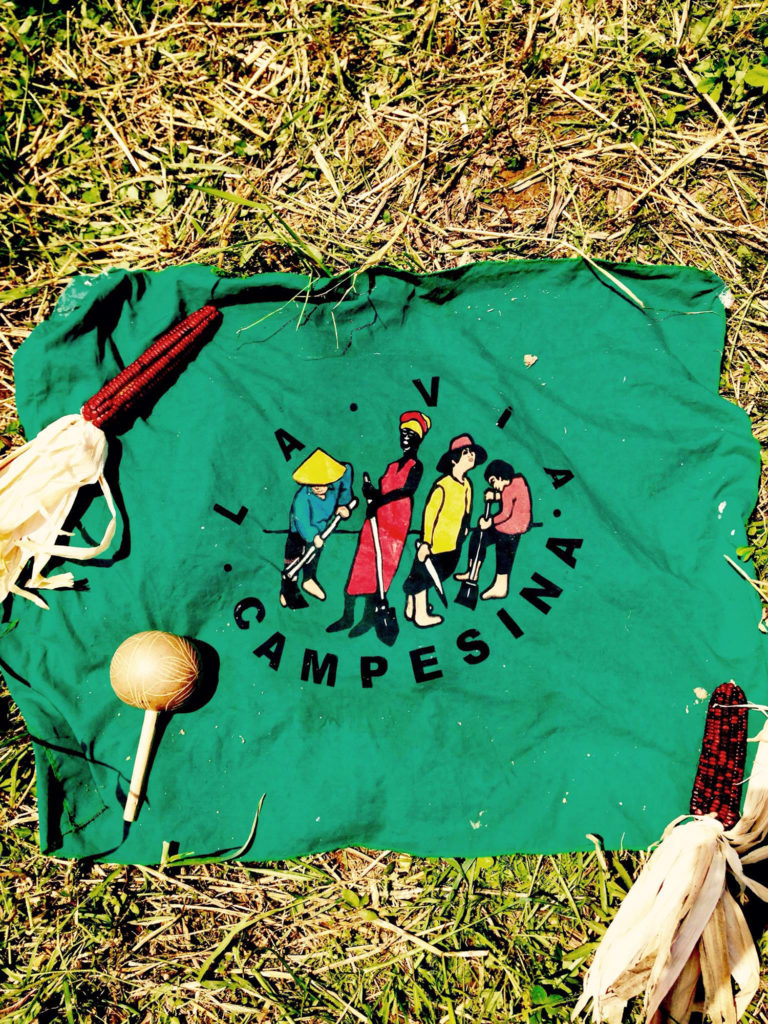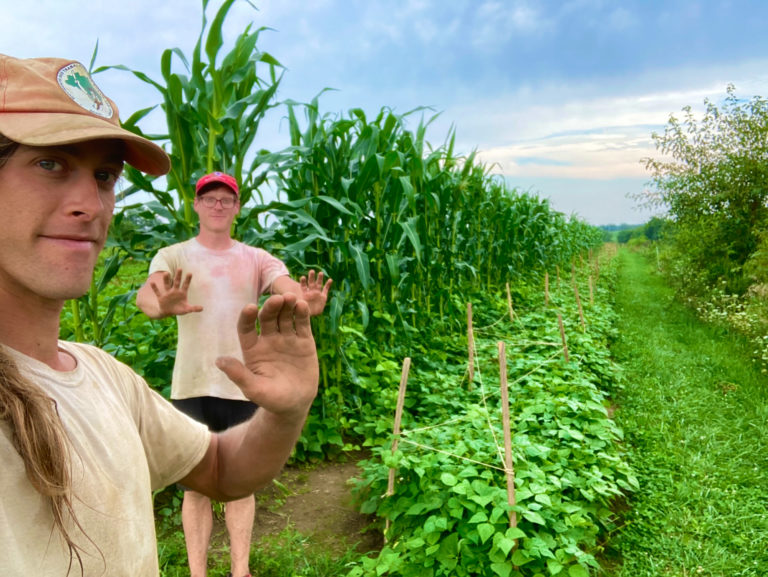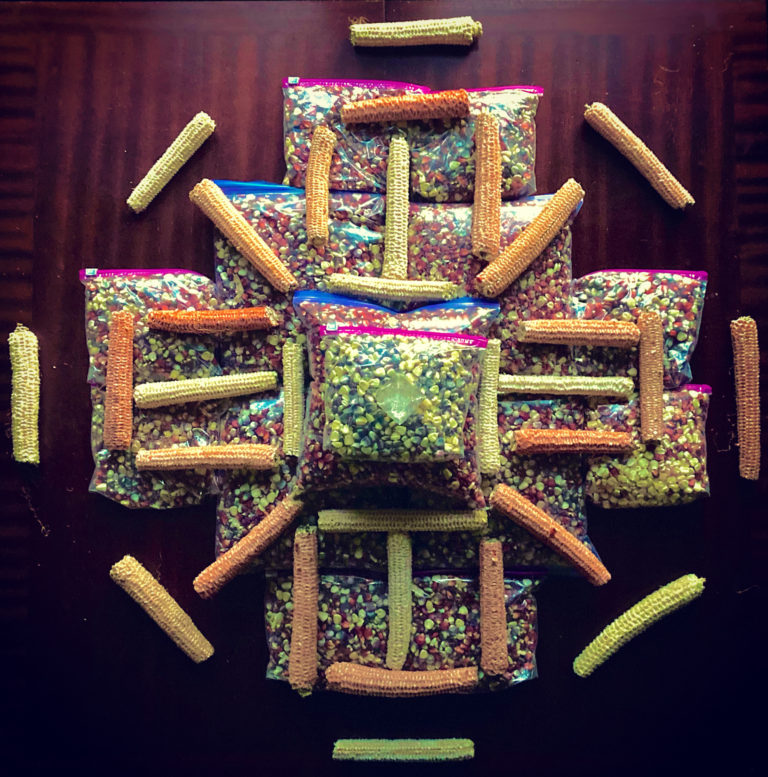Adopt a Seed:
Seed Heritage of the People for the Good of Humanity
This is a short story about my role as a guardian of R3R – Rhodelia Triple Rainbow – the beloved dent corn grown collectively by Sustainable Agriculture of Louisville (SAL) and individually by our members and friends.
Here in the Ohio River Valley, the land that we work was, prior to colonization, a crossroads for multiple indigenous tribes, including the Shawnee, Creek, Cherokee, and Great Lakes peoples. While honoring their many contributions to humanity, we lament the injustices that initiated settler colonialism and examine our complicity in its continuation. Historical memory and collective action are truly necessary to achieve a Just Transition toward a regenerative economy of life, sacredness, and caring rooted in communitarian values and deep respect for our mother Earth.

SAL practices and promotes food sovereignty and agroecology in alignment with over 200 million smallholder food producers articulated in the international peasant movement La Vía Campesina. Through community-based farming and movement-building, we sow seeds of resistance against agribusiness and cultivate our rights as peasants and workers. We feed our peoples and strengthen local-to-global solidarity in order to change the world!
Each growing season, SAL mobilizes to plant, weed, and harvest our heirloom corn and beans, as well as a variety of squash, all grown in the same field. We often plant red corn seeds on one side of the plot and white seeds on the other.
We previously knew these two varieties as Bloody Butcher and Hickory King, but cross-pollination has naturally produced R3R, which in its totality expresses a wide variety of kernel shapes and patterns, a range of cob sizes, and joyful array of colors. Wonderful surprises happen with intentional and grateful opening of each ear.
SAL works in community. We eat together too, though the pandemic has greatly limited our ability to celebrate through community events for relationship-building, popular education, and recruitment.
Coronavirus-related emergency orders issued in Puerto Rico during March 2020 compelled me to leave the archipelago, where I had been working informally as a farm apprentice for several weeks. I returned home to Kentucky, soon finding employment at a diversified two-family farm. I was allotted a small plot of land for subsistence production, in addition to my wage for full-time work between April and December.
Once my employer prepared the plot days before the summer solstice, my sowing of corn and beans began. My planting technique combined skills acquired through years of involvement in SAL with lessons learned through personal gardening efforts and, more importantly, by working with peasants in Latin America and the Caribbean. My experience of the peasant-to-peasant methodology for scaling agroecology has thus entailed the spontaneous sharing of knowledge and more structured learning.

I planted R3R in the first half of the plot and two Central American varieties of corn in the back. My natural farming experimentation involved planting only blue R3R seeds in front section and a unique red seed toward the middle. With pole beans intercropped among three rows of corn and bush beans densely planted at the edge of the field, I succeeded with developing a small agroecological paradise, enjoyed by myself, both families on the farm, and visitors.
The first weeding loosened the soil following days of heavy rain. The second weeding a week later involved light mounding and hilling with a hoe to provide support to the plants. Less than a month after planting, squash entered my plot from the side, compelling me to reposition the vines in order to prevent them from dominating the space.
Two fascinating phenomena occurred on several corn stalks at multiple times during August and September. Nitrogen-fixing aerial root mucilage formed after heavy rain. Huitlacoche grew abundantly as well.
Tassels grew about two months after planting. Harvest commenced with chilote, or baby corn. In late September, the dry bean harvest began. I waited for the corn to mature, but around the equinox, I had little patience.

By late October, all of the R3R was dry enough for harvest and processing, which occurred in stages. My brother assisted me with removing corn ear worms from the tip of each of the cobs.
The corn stored from my personal production will likely sustain me for an entire year. I also have plenty of seed for planting and sharing to advance the Adopt a Seed action as part of La Via Campesina’s campaign Seed Heritage of the People for the Good of Humanity.

Tyler Short (he/him)
I am a young peasant and worker organized in the Youth Articulation of La Via Campesina North America.

